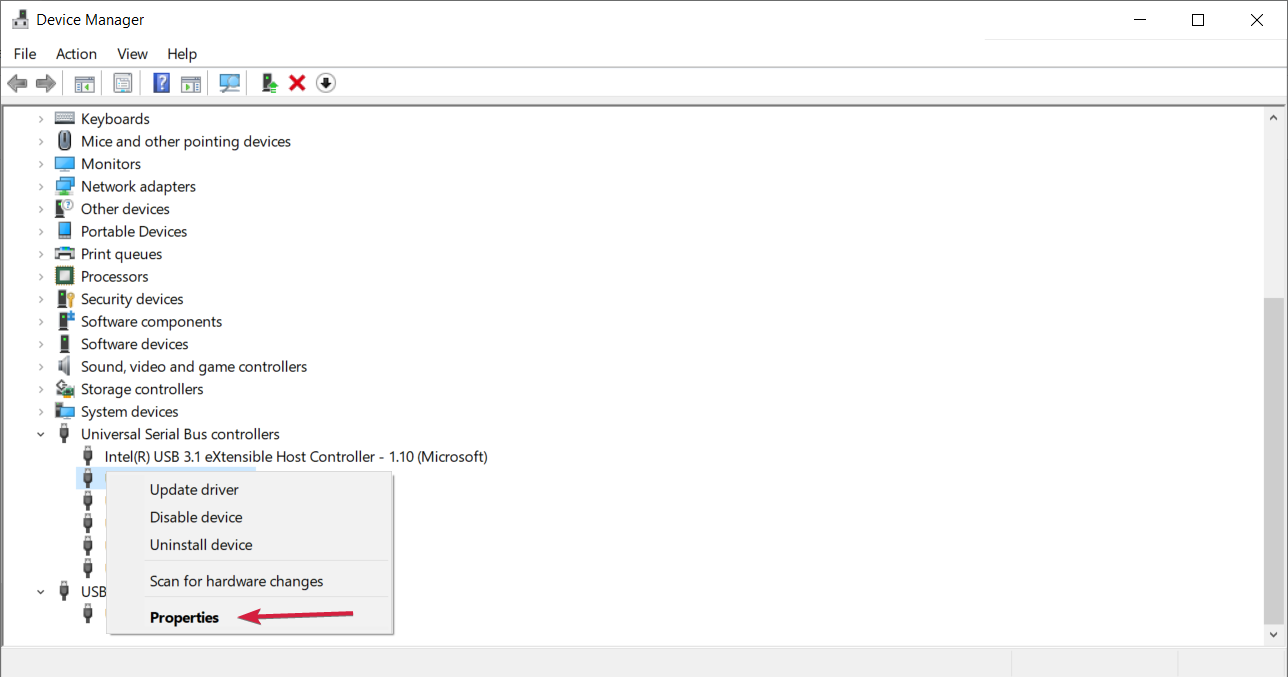

- Portable devices amd usb 3.0 host controller windows 10 how to#
- Portable devices amd usb 3.0 host controller windows 10 install#
- Portable devices amd usb 3.0 host controller windows 10 serial#
- Portable devices amd usb 3.0 host controller windows 10 drivers#
- Portable devices amd usb 3.0 host controller windows 10 update#
These commands display information from data structures maintained by three drivers in the USB 3.0 stack: the USB 3.0 hub driver, the USB host controller extension driver, and the USB 3.0 host controller driver.
Portable devices amd usb 3.0 host controller windows 10 how to#
How to use the default operation of the Windows software trace preprocessor (WPP) to trace the operation of a software component (trace provider).
Portable devices amd usb 3.0 host controller windows 10 install#
It includes information on how to install the tools, create trace files, and analyze the events in a USB trace file. Debugging and diagnostic toolsĮvent Tracing for Windows (ETW) is a general-purpose, high-speed tracing facility that is provided by the operating system. This blog post describes how the USB driver stack handles function and selective suspend in USB 3.0 devices. It explains hardware transitions from U1 to U2 and provides information about common pitfalls in LPM implementation in USB controllers, hubs, and devices. This document provides guidelines for hardware vendors and OEMs to implement power management for USB devices by using Link Power Management (LPM) in conjunction with Selective Suspend.

Link Power management in USB 3.0 Hardware The device must report the ID in a Microsoft OS ContainerID descriptor. For devices that support multiple functions (composite device) or components (compound device), the device must report the same ID for each portion. The blog post describes how a device must report a container ID such that Windows enumerates and shows the device in Devices and Printers properly. How to Generate a Container ID for a USB Device Guidelines for device manufacturers to program their multifunction USB devices so that they can be correctly detected by Windows.
Portable devices amd usb 3.0 host controller windows 10 serial#
Setting a container IDĭescribes how Container IDs for Universal Serial Bus (USB) devices are generated. The specification is included in the download for Microsoft OS 1.0 Descriptors Specification. For examples about how to define the compatible ID, see the example section of the Extended Compat ID OS Feature Descriptor Specification. Those descriptors allow Windows to load Winusb.sys as the device's function driver without a custom INF file. The IHV can define certain Microsoft operating system (OS) feature descriptors that report the compatible ID as "WINUSB". Loading Winusb.sys as the function driver by using Microsoft OS descriptors The goal of Microsoft OS 2.0 Descriptors is to address the limitations and reliability problems with version 1.0 of OS descriptors and enable new Windows-specific functionality for USB devices. This document defines and describes the implementation of version 2.0 of the Microsoft OS Descriptors. Microsoft OS 2.0 Descriptors Specification

:max_bytes(150000):strip_icc()/usbinwindowshardwarelist-cbee81359c534643843e4c9564302fb0.jpg)
It includes a specification for the OS string descriptor, extended properties OS feature descriptor, and OS feature descriptors formats. This document introduces Microsoft OS descriptors. Microsoft OS 1.0 Descriptors Specification See Microsoft OS Descriptors for USB Devices. Window retrieves that information by reading Microsoft OS descriptors, and uses it to install and configure the device without requiring any user interaction.
Portable devices amd usb 3.0 host controller windows 10 update#
IHVs typically must use Windows Update or media such as CDs to provide their users with a variety of device-specific information such as pictures, icons, and custom drivers.Īn IHV can use Microsoft OS descriptors to store the information in firmware instead of providing it separately. However, the types of information that those descriptors can contain is limited. In addition, the device can store class and vendor-specific descriptors. USB devices store standard descriptors in firmware for the device and its interfaces and endpoints. Read the post is to bring awareness to those subtle changes and enable device/firmware builders to easily determine the root cause of enumeration failures. Those modifications support new USB features and improve device enumeration performance. In Windows 8, we’ve made modifications in the USB driver stack in how the stack enumerates USB 2.1, 2.0, and 1.1 devices. USB 2.1, 2.0, 1.1 device enumeration changes in Windows 8 USB device enumeration processĪ detailed description of the enumeration process used by the Microsoft USB driver stack - starting from when the stack detects the presence of a device and indicates to the PnP manager that a new device has arrived. This section provides links for manufacturers of USB peripheral devices.


 0 kommentar(er)
0 kommentar(er)
